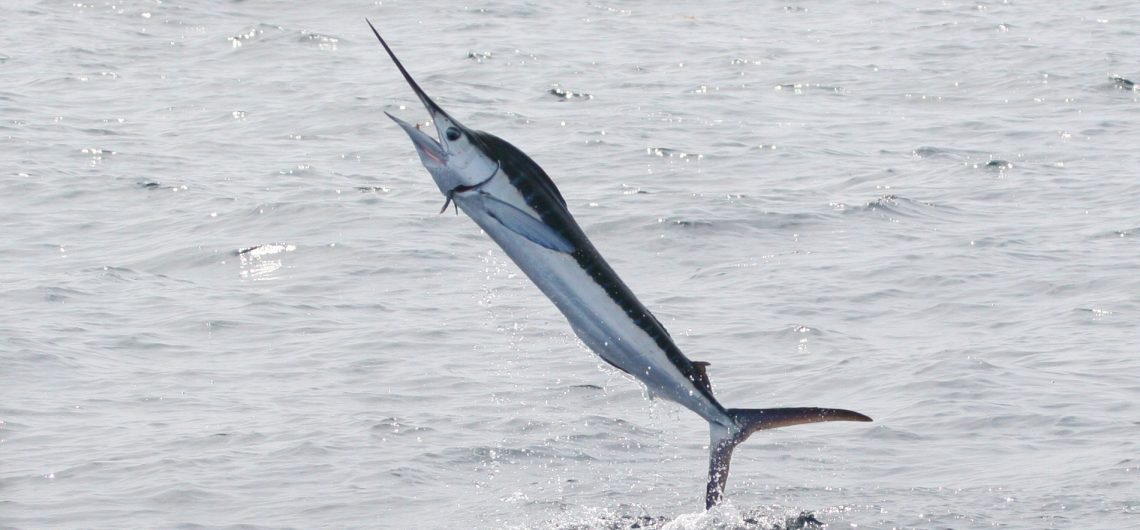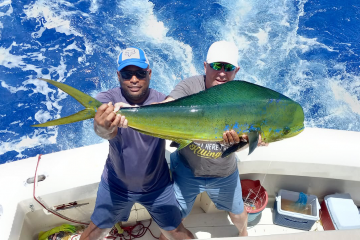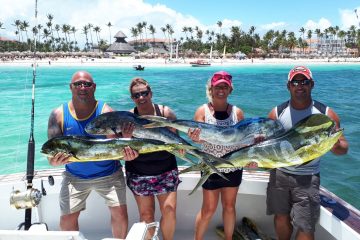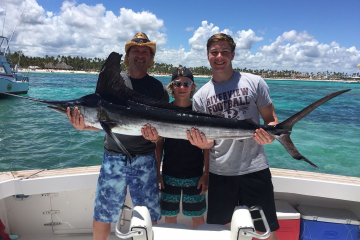White Marlin
Species name: Tetrapturus albidus (Poey 1860)
Synonyms for use: Kajikia albida (Poey, 1860)
ICCAT species code: WHM
ICCAT names: White needle (Spanish), Makaire Blanc (French), White Marlin (English)
Nakamura (1985) classified the white needle as follows:
- Phylum: Chordata
- Subphylum: Vertebrata
- Superclass: Gnathostomata
- Class: Osteichthyes
- Subclass: Actinopterygii
- Order: Perciformes
- Suborder: Xiphioidei
- Family: Istiophoridae
White Marlin (Kajikia albida), also known as Atlantic White Marlin, marlin, skilligalee, is a species of billfish that lives in the epipelagic zone of the tropical and subtropical Atlantic Ocean. They prefer warm surface temperatures greater than 22 °C.
Identification
There is the possibility of confusing the White Marlin with the Swordfish. As described in the name, the round-scale swordfish has a round broadband front end of its scales. The white needle scales are more rigid and rounded in the posterior region of the scale.
Taxonomy and evolution
In 1860, Felipe Poey gave the White Marlin the name Tetrapturus albidus. This classification places the species in the same genus as shortbill spearfish, Mediterranean spearfish, roundscale spearfish, and longbill spearfish. Researchers have identified fossils from the genus Tetrapturus dating back to the Langhian Age 15 million years ago (Mya).
Appearance and anatomy
The largest White Marlin reported was:
- Size: 2.8 m (9.2 feet)
- Weight: 82 kg (180.8 lb)
The coloring of White Marlin is used as countershading, with a dark blue dorsal side and a dirty white ventral side. Though all White Marlin have the same coloring pattern, they are sexually dimorphic, with the females usually larger. One of the most noticeable features of White Marlin is the dorsal fin, which extends along the majority of the dorsal portion of its body. The dorsal fin consists of typically 28 to 46 rays. White Marlin have a set of similar pectoral fins and pelvic fins.
Feeding and diet
Within your favorite foods we find
- Flying Fish
- Small Tuna
- Mahi-Mahi (Dolphin Fish, Gold)
- Squid
They sometime forage for food with help of other predators. They also obtain food is by diving down in a V- or U- shaped parabola to about 200 m in search of food that is not at the surface. To survive in these lower temperatures and darker environments, White Marlin have larger eyes and a way to selectively warm their eye and brain tissue.
Lifecycle and migration
The lifecycle of K. albida begins with a large spawning in warm tropical waters near the equator. Each female can lay 190,000 to 586,000 eggs.
Your favorite places for Withe Marlin to spawn are:
- The Gulf of Mexico
- Mona Passage
- Southwest Bermuda
- Northwest Grand Bahama Island
Are a few locations that have been located as prime spawning ground for White Marlin. They return to the warm, shallow, equatorial waters each year to spawn. Growth of White Marlin is very rapid, with males reaching sexual maturity at only 153.2 cm LJFL and females becoming sexually mature at 189.9 cm LJFL.
White Marlin are ram ventilators, which means they have to be constantly moving to breathe. Many have made long transatlantic journeys.
Most Popular Tours






Comments